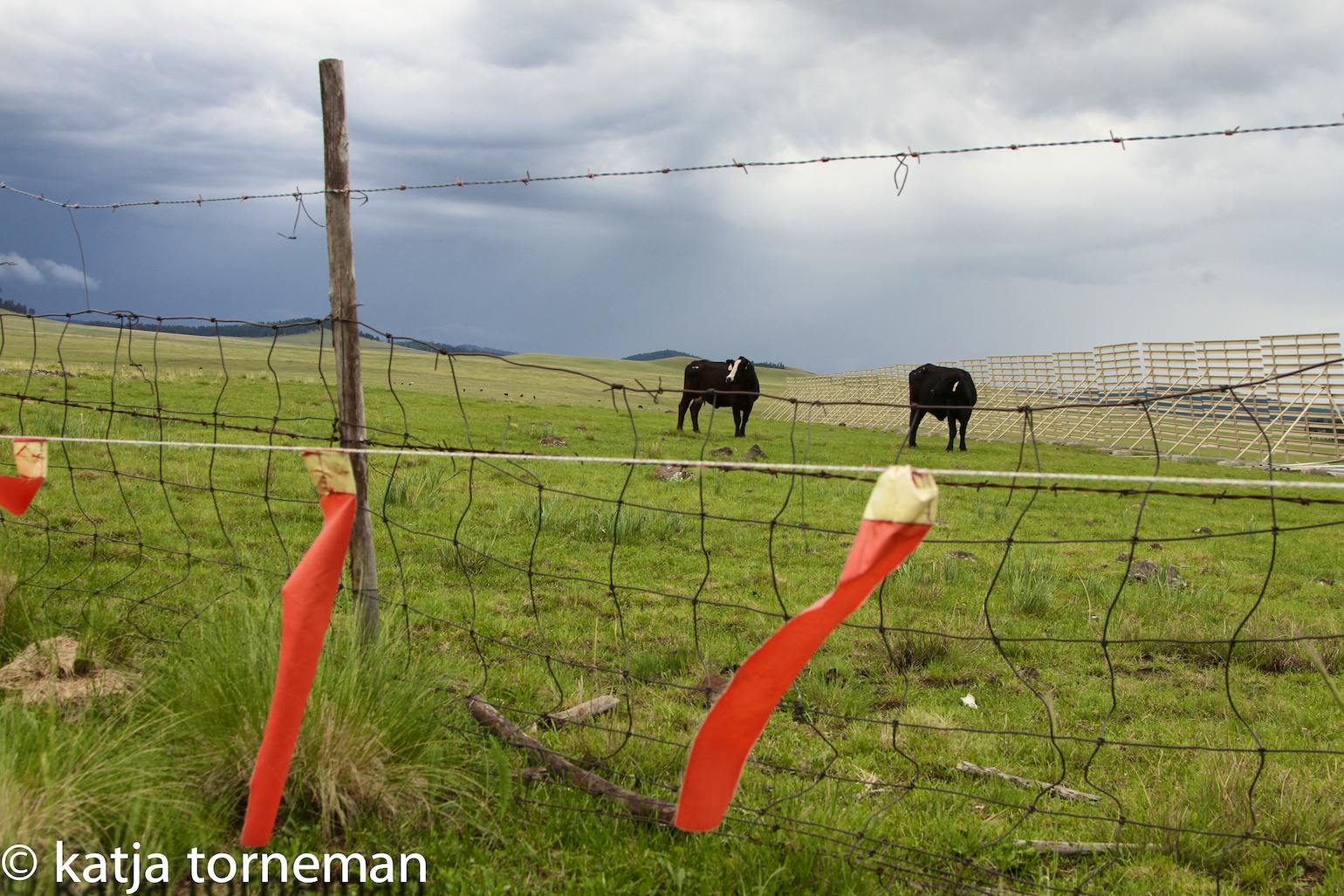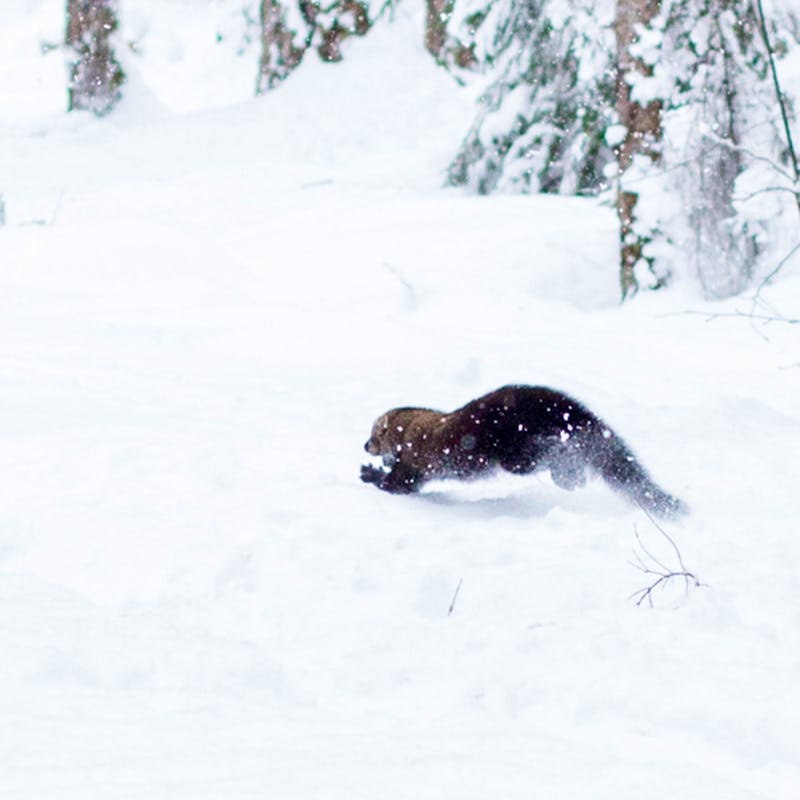Coexistence is key for survival of apex predators like the highly endangered Mexican gray wolf
As winter begins to take hold in the high country of the American Southwest, people and wildlife alike are busy preparing for cold temperatures and deep snow. Humans are stacking firewood, caching canned foods and winterizing homes; elk and deer are making their way down to lower elevations for access to winter forage; and Mexican gray wolves are finishing up the spoils of their successful hunts and the leftovers from human hunters before following the herds to lower ground. Because cattle also graze on these same winter pastures, we at Defenders are also busy working with ranchers and wolf project managers making preparations for collaborative work to reduce the potential for conflicts between wolves and livestock.

A member of the Turkey Creek Livestock Association on the White Mountain Apache Reservation tests a motion detection camera. This camera program provides reward payments for photos of wolves taken by remote cameras, creating a financial incentive for wolf presence on tribal lands.
Our Living with Wildlife programs are based on the recognition that humans and wildlife occupy a shared landscape and that we share the responsibility to resolve our conflicts. Through these partnership projects we hope to increase tolerance for critically endangered Mexican gray wolves in time to prevent their extinction, and do so in a way that encourages cooperation, leadership and respect for the ecological restoration that scientists say will accompany these wolves’ recovery.
Throughout 2013, we’ve developed and supported 12 coexistence projects in the territories of 13 wolf packs within the Blue Range Wolf Recovery Area and on White Mountain Apache tribal lands. These projects have involved range riders, fladry, alternative pastures, diversionary feeding of livestock, community calving and other proven techniques to reduce conflicts between wolves and livestock. For more details on these conflict avoidance tools and techniques take a look at our field guide Livestock and Wolves – A Guide to Non-lethal Tools and Methods to Reduce Conflict. While no single approach to reducing conflicts is effective in every situation, by working together with affected livestock producers and wildlife managers to troubleshoot problem scenarios, we’ve made improvements on the ground for both wolves and humans. But, while the number of wild Mexican gray wolves has grown in the last year from 58 to 75, their future still remains highly uncertain and we’ve still got a lot of hard work ahead.

Defenders southwest representative Craig Miller shows Apache Wilderness Journeys guests how to recognize and identify Mexican wolf tracks.
I’ve also been working as a conservation representative on the Fish and Wildlife Service’s Mexican Wolf Interdiction Stakeholder Council (now called the Coexistence Council) alongside wolf country ranchers, tribal and county representatives and agency officials to help develop a new and innovative program to support a growing wolf population. We call this the “Coexistence Plan.” What’s exciting about this program is that it has been co-developed by some of the ranchers who have been most affected by wolves, yet it still seeks to support a viable population of these very wolves. By combining conflict avoidance measures with performance-based incentives for successfully hosting a growing wolf population, this home-grown approach has great potential to further wildlife conservation while better addressing the concerns of ranchers living in wolf country.
Adding to that, Defenders’ yearly Living with Wildlife and coexistence project expenditures will be used as a match to help cooperating states and tribes obtain critical funding through the federal Livestock Loss Demonstration Act. These funds will, in turn, be used to implement various strategies of the Coexistence Plan, so we all share responsibility for the implementation and success of the Coexistence Plan. And if we’re successful, the conservation benefits of our work will be multiplied because these funds will help to implement more conflict avoidance projects in new wolf territories and provide a financial incentive to local communities for helping to increase the wild wolf population.
[portfolio_slideshow id=25165]
Craig Miller is a Southwest Representative for Defenders of Wildlife




